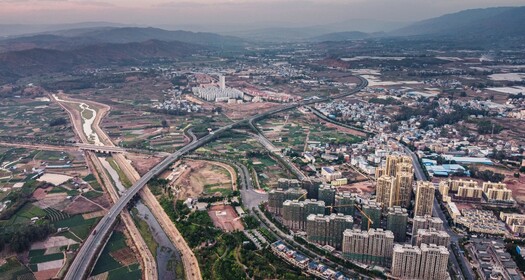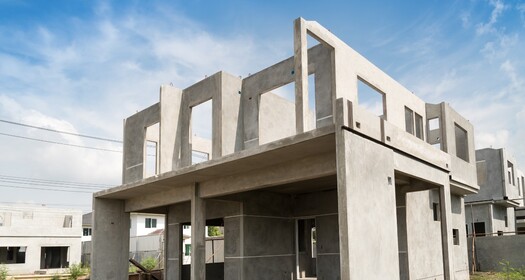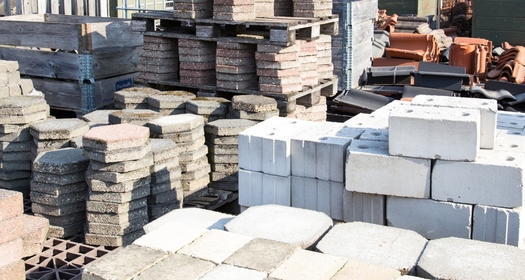
I. Introduction
A. Overview of the current labor shortage in the construction industry
The construction industry is currently facing a significant labor shortage, which is having a major impact on the industry as a whole. The shortage is primarily due to a combination of factors, including an aging workforce, a lack of new workers entering the industry, and a lack of investment in workforce development.
One of the biggest challenges presented by the labor shortage is the difficulty finding and retaining skilled workers. Many experienced construction workers are nearing retirement age, and there are not enough young people entering the industry to replace them. This is leading to a shortage of workers with the necessary skills and experience to complete construction projects.
The shortage of workers is also leading to increased competition among contractors, as they struggle to find the workers they need to complete projects on time and within budget. This competition is driving up wages and benefits, which is making it more difficult for smaller contractors to compete.
The labor shortage is also having a significant impact on small and minority-owned businesses, which are often the first to be affected by labor shortages. These businesses often have fewer resources to devote to recruiting and training new workers, and may find it harder to compete for workers in a tight labor market.
Overall, the labor shortage in the construction industry is a major concern for the industry, and will likely continue to have a major impact in the coming years unless steps are taken to address the issue.
B. Purpose of the blog post
The purpose of this blog post is to explore the challenges and opportunities presented by the current labor shortage in the construction industry. It will provide an overview of the causes and effects of the shortage, and will explore potential solutions to address the problem. The blog post will also consider the impact of the labor shortage on small and minority-owned businesses, as well as the potential implications for the industry as a whole. The goal is to provide an in-depth analysis of the current situation and to encourage industry stakeholders to take action to address the labor shortage.
II. Challenges presented by the labor shortage
A. Difficulty finding and retaining skilled workers
One of the biggest challenges presented by the labor shortage in the construction industry is the difficulty in finding and retaining skilled workers. The industry is facing a significant labor shortage due to an aging workforce and a lack of new workers entering the industry. As a result, many contractors are struggling to find workers with the necessary skills and experience to complete construction projects. This is leading to delays and increased costs in construction projects, as well as a higher demand for wages and benefits for skilled workers. Additionally, due to the shortage of skilled workers, contractors are facing a high turnover rate, making it hard to retain skilled workers, which exacerbates the problem.
B. Increased competition for workers among contractors
The labor shortage in the construction industry is also leading to increased competition among contractors for the limited pool of skilled workers. As the demand for workers exceeds the supply, contractors are struggling to find the workers they need to complete projects on time and within budget. This competition is driving up wages and benefits, which is making it more difficult for smaller contractors to compete. Additionally, larger contractors with more resources may have an advantage in recruiting and retaining skilled workers, further exacerbating the issue of competition among contractors.
Moreover, this competition also pushes up the prices of the projects, making it more expensive for the clients, and may also lead to subpar work as contractors may rush to finish the projects on time, leading to a decrease in quality.
C. Delays and increased costs in construction projects
The labor shortage in the construction industry is also causing delays and increased costs in construction projects. With a shortage of skilled workers, contractors are struggling to complete projects on time, which can lead to delays in construction schedules. These delays can result in additional costs for contractors, such as extended rental costs for equipment and increased labor costs due to overtime pay. Moreover, the shortage of skilled workers can also lead to a decrease in work quality, which can require additional time and resources to fix. Additionally, the lack of skilled workers can also lead to more safety hazards on the job site, leading to more time and money spent on safety measures. All these factors ultimately increase the overall cost of the project for the contractor and the client.
D. Impact on small and minority-owned businesses
The labor shortage in the construction industry is having a significant impact on small and minority-owned businesses. These businesses often have fewer resources to devote to recruiting and training new workers, and may find it harder to compete for workers in a tight labor market. As a result, they may be more likely to experience delays and increased costs in construction projects, which can make it harder for them to compete with larger contractors. Additionally, small and minority-owned businesses may also be disproportionately affected by increasing wages and benefits, which may put them at a disadvantage in the marketplace. Furthermore, the shortage of skilled workers can also lead to more safety hazards on the job site, leading to more time and money spent on safety measures, which can be a significant burden for small and minority-owned businesses.
III. Opportunities presented by the labor shortage
A. Increased investment in technology and automation
The labor shortage in the construction industry is also leading to increased investment in technology and automation. As the industry struggles to find enough skilled workers, contractors are turning to technology to help fill the gap. This includes investments in automation, such as the use of drones and robots for tasks such as surveying, demolition, and heavy lifting. Additionally, there's a growing interest in Building Information Modelling (BIM) which allows for better coordination and communication between different parties involved in a construction project. This technology can help to improve efficiency and accuracy, and can also help to reduce the need for skilled labor. Furthermore, the use of prefabrication and modular construction, can also help to decrease the number of workers needed on site, while increasing the speed and quality of the project.
B. Development of new training and apprenticeship programs
To address the labor shortage in the construction industry, there is an increasing emphasis on the development of new training and apprenticeship programs. These programs aim to attract new workers to the industry, and provide them with the necessary skills and experience to succeed in the field. This includes programs that provide on-the-job training, as well as classroom instruction, to give workers the skills they need to succeed. Additionally, there's also an increasing interest in vocational education, which can provide students with the skills they need to start a career in construction. Furthermore, industry organizations and trade groups are also developing programs to provide training for specific skills, such as welding, plumbing, and electrical work. These programs can help to attract new workers to the industry, and provide them with the necessary skills and experience to fill the labor shortage.
C. Increase in wages and benefits to attract workers
One of the strategies to address the labor shortage in the construction industry is the increase in wages and benefits to attract workers. As the demand for workers exceeds the supply, contractors are facing pressure to offer higher wages and better benefits to attract and retain skilled workers. This can include higher base pay, bonuses, and other incentives such as health insurance, retirement plans, and paid time off. Additionally, employers are also looking to offer more flexible working arrangements, such as remote working, to attract workers who may be looking for more balance in their lives. The increase in wages and benefits can be an effective way to attract workers to the industry and can help to mitigate the effects of the labor shortage. However, it should be noted that this approach can also increase the costs of construction projects, making it harder for small and minority-owned businesses to compete.
D. Opportunities for women and minorities to enter the industry
The labor shortage in the construction industry is also creating opportunities for women and minorities to enter the industry. The shortage of skilled workers is leading to a greater need for diversity in the workforce, and many employers are looking to actively recruit women and minorities to fill the gap. This can include initiatives such as mentorship programs, targeted recruitment efforts, and training programs to help women and minorities succeed in the industry. Additionally, there's also a growing awareness of the importance of diversity and inclusion in the construction industry, which can help to create a more welcoming environment for women and minorities. Furthermore, the shortage of skilled workers can also lead to more safety hazards on the job site, leading to more time and money spent on safety measures, which can be a significant burden for small and minority-owned businesses.
IV. Solutions to address the labor shortage
A. Government policies and incentives to encourage workforce development
One of the solutions to address the labor shortage in the construction industry is the implementation of government policies and incentives to encourage workforce development. This can include funding for apprenticeship programs, tax incentives for employers who invest in workforce development, and grants for training and education programs. Additionally, government can also invest in vocational education, which can provide students with the skills they need to start a career in construction. Furthermore, government can also invest in housing and transportation infrastructure to attract workers to areas with high demand, which can help to mitigate the labor shortage. Also, the government can establish immigration policies that would allow more foreign workers with construction skills to enter the country, and provide a solution to the labor shortage.
B. Collaboration between contractors, trade organizations, and educational institutions
Another solution to address the labor shortage in the construction industry is the collaboration between contractors, trade organizations, and educational institutions. This can include partnerships between contractors and trade organizations to develop training and apprenticeship programs, as well as collaborations between contractors and educational institutions to develop curriculum and training programs. Additionally, trade organizations can also play a role in promoting the industry and encouraging more young people to consider careers in construction. Furthermore, the collaboration between contractors, trade organizations, and educational institutions can also help to promote the use of new technologies, such as Building Information Modelling (BIM) and automation, which can help to improve efficiency and accuracy, and reduce the need for skilled labor.
C. Investment in housing and transportation infrastructure to attract workers to areas with high demand
Another solution to address the labor shortage in the construction industry is the investment in housing and transportation infrastructure to attract workers to areas with high demand. This can include the construction of affordable housing for workers, as well as the development of transportation infrastructure such as highways, public transportation, and airports. This can help to make it easier for workers to move to areas where there is a high demand for construction workers. Additionally, this investment can also help to attract more workers to the industry, by providing them with the necessary infrastructure to support their families and livelihoods. Furthermore, it can also help to create more opportunities for small and minority-owned businesses, as they will have access to a larger pool of skilled workers in these areas.
D. Development of new, innovative recruitment strategies
Another solution to address the labor shortage in the construction industry is the development of new, innovative recruitment strategies. This can include the use of social media and other digital platforms to reach new audiences and promote the industry, as well as the use of targeted recruitment efforts, such as outreach to schools and vocational programs. Additionally, employers can also use new technologies such as virtual reality, to showcase the work environment and the benefits of working in construction. Furthermore, employers can also use data analysis to identify where the shortages in the workforce are, and focus their recruitment efforts in those areas. Moreover, the industry can also invest in branding, to showcase construction as a modern, well-paying and exciting field, in order to attract younger generation to the industry.
V. Conclusion
A. Summary of the challenges and opportunities presented by the labor shortage
The labor shortage in the construction industry presents several challenges and opportunities. The challenges include difficulty finding and retaining skilled workers, increased competition for workers among contractors, delays and increased costs in construction projects, and impact on small and minority-owned businesses. However, the labor shortage also presents several opportunities such as increased investment in technology and automation, development of new training and apprenticeship programs, increase in wages and benefits to attract workers, and opportunities for women and minorities to enter the industry. To address these challenges, stakeholders in the industry can implement solutions such as government policies and incentives to encourage workforce development, collaboration between contractors, trade organizations, and educational institutions, investment in housing and transportation infrastructure to attract workers to areas with high demand, and development of new, innovative recruitment strategies.
B. Call to action for industry stakeholders to take action to address the labor shortage.
The labor shortage in the construction industry is a major concern for the industry, and it's vital that industry stakeholders take action to address the problem. This includes contractors, trade organizations, educational institutions, and government agencies all working together to develop new strategies and solutions. This can include investing in workforce development, creating new training and apprenticeship programs, and implementing policies and incentives to attract and retain skilled workers. Additionally, industry stakeholders should also consider innovative solutions such as the use of technology and automation, as well as investing in housing and transportation infrastructure to attract workers to areas with high demand. Furthermore, it's also important to create a more inclusive and diverse workforce, to attract and retain a wider range of workers. Together, the industry can work towards addressing the labor shortage, and ensuring the long-term success of the construction industry.






